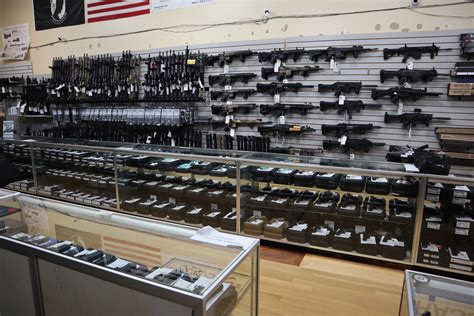
Categories:
Understanding basic gun safety is crucial for beginners to ensure not only their own safety but also the safety of those around them. The first fundamental rule of gun safety is to always treat every gun as if it is loaded. This mindset establishes a cautious approach, reducing the risk of accidental discharge. When handling a gun, maintain awareness of where the muzzle is pointing.
The cardinal rule is never to point the muzzle at anything you do not intend to destroy. Practicing safe muzzle direction can significantly minimize accidents.
Another essential aspect of gun safety is keeping your finger off the trigger until you are ready to fire. This rule helps prevent accidental firing caused by reflexive actions or nervousness. Beginners should practice keeping their finger outside the trigger guard until they have fully assessed their target and are prepared to shoot.
Understanding and identifying the target and what lies beyond it is also paramount. Before firing, be certain that your target is clearly visible and recognizable. Furthermore, always check what is beyond your target to prevent unintended harm, as bullets can travel a considerable distance or pass through a target.
Safe storage of guns when not in use is another critical component of gun safety. Ensure that guns are stored unloaded, with ammunition stored separately, in a secure location inaccessible to unauthorized persons, particularly children. Utilizing gun safes or lockboxes can provide an added layer of security.
Familiarity and practice with the specific gun being used can enhance safety. Understanding the functioning of the gun, including how to load, unload, and engage safety features, is crucial. Regular practice at a shooting range under the supervision of experienced individuals can help beginners handle guns more confidently.
Ultimately, a responsible attitude and adherence to these basic gun safety principles can significantly mitigate risks, encouraging an environment of respect and safety for all gun users and those around them.
When delving into the world of guns as a beginner, understanding the various types of guns is essential. Guns can generally be categorized into three main types: handguns, rifles, and shotguns. Each type serves distinct purposes and comes with its own set of characteristics that appeal to different shooting activities.
Handguns are compact guns designed for one-handed operation, making them ideal for personal defense and concealed carry. Within this category, there are revolvers and semi-automatic pistols. Revolvers typically feature a revolving cylinder that holds multiple rounds, allowing for a straightforward and reliable shooting experience. Semi-automatic pistols, on the other hand, use magazine-fed mechanisms that automatically cycle the action for each shot, providing quick follow-up shots and higher ammunition capacity.
Rifles are long-barreled guns designed for precision shooting at various distances. They are utilized for hunting, sport shooting, and military applications. Rifles can be further divided into several action types, including bolt-action, lever-action, and semi-automatic. Bolt-action rifles are known for their accuracy and are commonly used in hunting and competitive shooting. Lever-action rifles, recognizable by their lever mechanism, offer a classic appeal and are historically significant.
Semi-automatic rifles, like the popular AR-15, allow for rapid-fire capabilities and are often used in competitive shooting sports.
Shotguns are versatile guns known for their wide range of uses, from hunting birds and small game to home defense. They can fire a variety of ammunition types, including birdshot, buckshot, and slugs, offering adaptability depending on the desired application. Shotguns come in several action types as well, with pump-action and semi-automatic being the most prevalent. Pump-action shotguns require manual cycling of the action between shots, known for their reliability, while semi-automatic shotguns offer faster shooting capabilities.
Understanding these basic categories and their unique functions will help beginners make informed decisions based on their specific needs and interests within the world of guns.
Choosing your first gun is a significant decision that requires careful consideration of several factors to ensure that you select the one that best suits your needs, comfort, and proficiency level. To start, it is essential to understand the purpose for which you are purchasing a gun. Whether it’s for self-defense, hunting, sport shooting, or collecting, knowing your primary use will help guide your choice.
Once you have determined the purpose, consider the type of gun that aligns with it. For beginners, handguns are often recommended for self-defense due to their compact size and ease of use, while shotguns or rifles might be preferred for hunting or sport shooting due to their range and accuracy.
Ease of use is another crucial factor to consider when choosing your first gun. Beginners should look for a gun with controls and mechanisms that are straightforward and intuitive. Additionally, it’s important to think about the size and weight of the gun. A gun should feel comfortable in your hands and not be too heavy, as this can affect your control and accuracy.
Test out different models to see which one feels best for you.
Recoil is an element that can greatly influence your shooting experience, especially as a beginner. Choosing a gun with manageable recoil can help you maintain control and accuracy, making the shooting experience more enjoyable and less intimidating. Try to test different calibers to find one that you can handle comfortably.
Safety is paramount when handling guns, and ensuring that you are choosing a reliable and safe model is critical. Research the safety features of different guns and consider models that are known for their reliability and have positive reviews from both experts and fellow gun owners.
Lastly, consider seeking advice from knowledgeable sources, such as gun instructors or experienced gun enthusiasts, who can provide guidance and insight into your selection process. By considering all these factors, you can make an informed decision that fits your needs and helps ensure a positive introduction to gun ownership.
The importance of proper training for beginners when it comes to guns cannot be overstated. For individuals new to guns, understanding the fundamental principles of gun safety and operation is crucial to ensure the safety of themselves and others. Proper training provides beginners with the knowledge and skills necessary to handle guns responsibly and confidently.
Safety is perhaps the most significant aspect emphasized during training. Guns are powerful tools, and improper handling can lead to accidental injuries or fatalities. Training teaches beginners the core principles of gun safety, such as treating every gun as if it is loaded, keeping the muzzle pointed in a safe direction at all times, finger discipline to avoid accidental discharge, and understanding the importance of proper storage.
These lessons form the bedrock of responsible gun ownership and usage.
Proper training also helps beginners become familiar with the mechanical aspects and functionality of different guns. Each type of gun, whether it be a handgun, rifle, or shotgun, has unique characteristics and operational methods. Training courses typically cover essential topics such as loading and unloading, aiming, and firing techniques, enabling beginners to develop foundational skills for effective and precise use. Additionally, proper training introduces students to maintenance practices that ensure the longevity and reliability of their guns.
Furthermore, training instills confidence in beginners. Many people may approach guns with apprehension or fear due to preconceived notions or a lack of experience. A structured training environment provides a supportive setting where new gun owners can ask questions and receive guided instruction under the supervision of experienced professionals. This not only builds technical competence but also helps alleviate anxieties, allowing beginners to transform into more assured and responsible gun owners.
Ultimately, proper training is an investment in safety, competence, and confidence. It ensures that beginners are well-prepared to assume the responsibilities that come with gun ownership and helps foster a culture of respect and knowledge around guns, reducing the potential for accidental harm.
When venturing into the world of guns for the first time, ensuring you have the right gear and accessories is crucial for both safety and effective skill development. The essentials extend beyond just the gun itself, starting with protective gear. Eye and ear protection are non-negotiable when handling guns, as they safeguard against loud noises and potential debris. Quality earplugs or earmuffs help prevent hearing damage, while shatterproof shooting glasses protect your eyes, ensuring a confident and secure shooting experience.
Equally important is a reliable storage solution. A gun safe or lockbox is paramount for responsible gun ownership, keeping guns out of unauthorized hands and offering peace of mind at home. Many beginners also invest in cleaning kits tailored to their specific gun model. Proper maintenance not only extends the life of your gun but also ensures optimal performance and safety.
A good kit typically includes brushes, rods, cleaning solvent, and an oil or lubricant to keep your gun in top condition.
For training and practice, having a suitable target setup is essential. Beginners often benefit from paper targets or reactive targets that offer immediate visual feedback, aiding in honing skills and improving accuracy. In addition, having an appropriate range bag to organize and transport your gear can make visits to the range more efficient and enjoyable. These bags usually have compartments for ammunition, eye and ear protection, targets, and other accessories, allowing for a streamlined shooting experience.
Additionally, investing in a basic toolkit specific to your gun can be a great asset for making minor adjustments or repairs. Lastly, a quality holster is essential, whether for carrying your gun in a concealed manner or simply for use at the range. It should offer a balance of accessibility, comfort, and security, tailored to the gun’s design. By prioritizing these essential gear and accessories, beginners can lay a solid foundation for safe and effective guns handling.
Practicing at the range is an essential part of becoming familiar and comfortable with guns, especially for beginners. It provides a controlled environment where you can focus on improving your skills and gaining the confidence needed to handle a gun safely and effectively. Before stepping onto the range, it is crucial to prioritize safety by understanding and following all basic gun safety rules.
These include treating every gun as if it is loaded, always keeping the muzzle pointed in a safe direction, keeping your finger off the trigger until ready to shoot, and being aware of your target and what is beyond it.
Once safety protocols are clear, start with a basic orientation of the range layout, rules, and procedures. Many ranges offer the services of range officers or instructors who can guide newcomers through the do’s and don’ts while on the range. Engaging with an experienced instructor can be highly beneficial as they can provide personalized feedback and tips on improving your shooting technique.
As a beginner, it’s helpful to start with a gun that has manageable recoil, such as a .22 caliber pistol or rifle, which allows you to focus on mastering the fundamentals without being overwhelming.
Hand placement, grip, stance, sight alignment, and trigger control are foundational aspects to concentrate on. Initially, it’s normal to feel unsure or nervous, but regular practice helps to reinforce proper techniques and diminish hesitancy. Take your time, and don’t rush the learning process. Start shooting at closer targets to build confidence and accuracy, gradually increasing the distance as your skills improve.
Remember, practice isn’t just about shooting often; it’s about shooting intentionally. Focus on consistency, and analyze your patterns and results after each session to identify areas for improvement.
Finally, always approach practice sessions with patience and persistence. Each visit to the range is a step forward in your journey of learning about guns. By dedicating time to practice, remaining patient with your progress, and staying committed to safety and education, you will develop a skill set that ensures responsible and proficient gun handling.
Proper maintenance and care for your gun are essential for ensuring its longevity and reliable performance. As a beginner, it’s important to familiarize yourself with these practices to keep your gun in optimal condition. Start by reading the instruction manual that comes with your gun. It contains specific cleaning and maintenance guidelines tailored for your model, which will help you understand the particular requirements of your weapon.
Always ensure your gun is unloaded before beginning any maintenance work. Double-check to confirm that there is no ammunition in the chamber or magazine. Safety is paramount to prevent accidents during this process. Once you are sure the gun is safe to handle, you can disassemble it according to the manual’s instructions. Typically, guns will need regular cleaning after every use, especially after shooting sessions, to remove powder residue, dirt, and debris that accumulate from firing rounds.
Use the appropriate cleaning solvents, oils, and tools designed for guns. A basic cleaning kit usually includes a bore brush, cleaning rod, patches, solvent, lubricating oil, and a soft cloth. Start by cleaning the bore of the gun using a solvent-soaked patch or brush to remove any fowling. Move the cleaning rod from the chamber to the muzzle to avoid pushing debris into the action.
After cleaning the bore, focus on the action and other moving parts. Use a solvent and brush to remove debris, then dry with a clean cloth. Once cleaned, apply a light coat of oil to prevent rust and ensure smooth operation. Be careful not to over-lubricate, as excess oil can attract dust and create jams.
Regular inspections of your gun for signs of wear or damage are crucial. If you detect any issues beyond your capacity to repair, consult a professional gunsmith. By consistently maintaining your gun and practicing safe cleaning procedures, you ensure both a longer lifespan for your gun and a safer experience each time you use it. Remember that responsible gun ownership begins with proper maintenance and care.
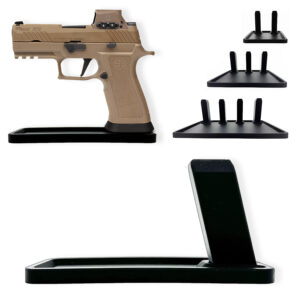
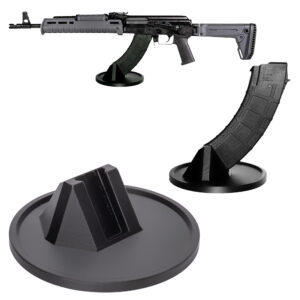

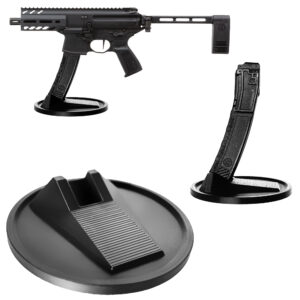
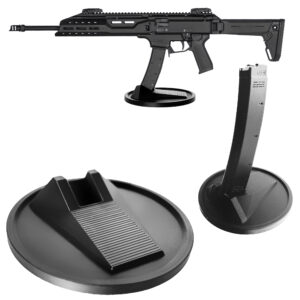

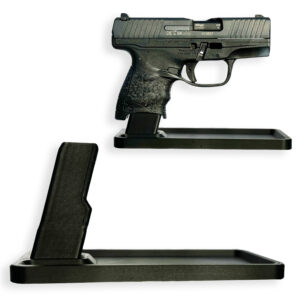

Colt
Colt M4 Carbine
Colt LE6920
Colt AR-15 A4
Daniel Defense
DDM4 V7
DDM4 V9
DDM4 V11
DDM4 ISR (Integrally Suppressed Rifle)
Smith & Wesson (S&W)
M&P15 Sport II
M&P15 Tactical
M&P15T
Bravo Company Manufacturing (BCM)
BCM Recce-16
BCM Recce-14
BCM MCMR Series
Aero Precision
M4E1 Series
AC-15
AR15 Pistol (Various Configurations)
Ruger
Ruger AR-556
Ruger SR-556
Ruger AR-556 MPR (Multi-Purpose Rifle)
Springfield Armory
Saint Victor
Saint Edge
Saint AR-15
PSA (Palmetto State Armory)
PSA PA-15
PSA AR-V
PSA Jakl (AR Pistol)
FN America
FN 15 Tactical Carbine
FN 15 Patrol
FN 15 DMR
Wilson Combat
Recon Tactical
Super Sniper
Protector Carbine
SIG Sauer
SIG M400 Tread
SIG M400 Elite
SIG M400 SDI
LWRC International
IC DI (Direct Impingement)
IC SPR
IC A5
Bushmaster Guns
XM-15 QRC
Bushmaster MOE
XM-15 Patrolman
Rock River Arms
LAR-15 Entry Tactical
LAR-15 Predator
LAR-15 Elite Comp
Stag Arms
Stag 15 Tactical
Stag 15L (Left-Handed Models)
Stag 15 Valkyrie
Noveske Rifleworks
Noveske Gen 4 N4
Noveske Space Invader (AR Pistol)
Noveske Recon
Anderson Manufacturing
AM-15 Optic Ready
AM-15 M4 Carbine
AM-15 Precision Rifle
Adams Arms
AA-15 Piston Rifle
P2 AARS (Adams Arms Rifle Series)
Black Rain Ordnance
SPEC15 Series
BRO Predator
Fallout 15
Diamondback Guns
DB15 Series
DB15CCMLB
DB15EB
Del-Ton Inc.
DTI-15
Del-Ton Echo 316H
Sierra 316M
Windham Weaponry
Windham SRC
Windham VEX-SS
Windham RMCS-4 (Caliber Conversion System)
Christensen Arms
CA-15 G2
CA-15 Recon
CA-15 Titanium Edition
Patriot Ordnance Factory (POF-USA)
Renegade Plus
P415 Edge
Revolution DI
LaRue Tactical
PredatAR
OBR (Optimized Battle Rifle)
LaRue Stealth 2.0
Battle Arms Development
Workhorse Patrol Carbine
BAD556-LW (Lightweight)
Authority Elite Rifle
Faxon Guns
Ascent AR-15
FX-19 (AR Pistol)
Streamline Ultralight Series
KE Arms
KE-15 SLT (Super Lightweight Tactical)
KE-15 Scout Carbine
Primary Weapons Systems (PWS)
MK1 MOD 2-M
MK116 PRO
MK107 (Piston AR Pistol)
ZEV Technologies
ZEV Core Elite Rifle
ZEV AR15 Billet Rifles
Franklin Armory
BFSIII AR-C1
Militia Model
F17-L (Chambered in .17 WSM)
Seekins Precision
SP15 DMR
NX15 Skeletonized Rifle
Havak Bravo
Aero Precision (Additional Models)
EPC-9 (Pistol Caliber ARs)
VG6 AR Rifles
Barrett Guns
REC7 DI
REC7 Gen II
CMMG
MK4 RCE
Resolute 300
Banshee (AR Pistol)
DPMS Panther Arms
Panther Oracle
Panther LR-308
H&K (Heckler & Koch)
HK MR556A1
HK416 (Military Variant)
Rock Island Armory (Armscor)
VR-80 Tactical AR (Shotgun AR Platform)
Troy Industries
Troy SPC-A3
Troy PAR (Pump Action AR)
Wilson Tactical
Tactical Recon AR
Protector Series
F1 Guns
FDR-15 Skeletonized Rifle
BDRx-15 Series
Juggernaut Tactical
JT-15
JT-10 Precision Rifle
AeroSurplus
Surplus AR-15 Rifles (Budget Models)
Thunder Tactical
AR-15 Basic Carbine
Tactical Builder Sets
Radical Guns
RF-15
Forged AR-Series
Dark Storm Industries
DS-15 Featureless Rifles
DS-10 Typhoon
DRD Tactical
Paratus
Aptus AR Rifles
Bear Creek Arsenal
BCA-15
AR Complete Upper Builds
Aero Survival Rifles (ASI)
ASR Tactical Series
Tactical Edge
WARFIGHTER Series
AR-15 Lightweight Rifles
Lone Star Armory
TX15 DMR
TX15 Carbine
HERA Arms
HERA H7
HERA AR-15 Lower Builds
IWI (Israeli Weapon Industries)
Zion-15
DRD Tactical
Tactical Modular Rifles
Quick-Takedown Rifles
V Seven Weapons
1776 Rifle
Hyperlite Rifle
Core Rifle Systems
Core15 Tac III
Core15 Patrol Rifle
Armalite (Original AR-15 Creator)
M15 Tactical
M15 A4 Carbine
DEF15 (Defensive Sporting Rifle Series)
PSA (Palmetto State Armory Additional Models)
PSAK-47 Hybrid (AR-AK Style Hybrid)
PSA Dagger (Pistol Caliber Configurations)
Odin Works
OTR-15
Odin Recon Rifle
Maxim Defense
MDX-508 PDX (Compact AR Pistol)
MDX-510 Rifle